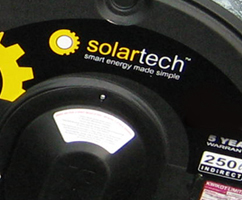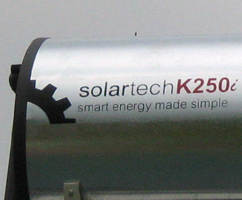

October 18th 2010Automotive manufacturer BMW South Africa (BMW SA) has invested in a 6 500 l/day solar geyser installation, as it continues to progress with energy efficiency and cleaner production initiatives. The system provides hot water for the main canteen at the company's plant in Rosslyn. The installation consists of 37 evacuated tube collectors, which generate 83% of the total energy requirement for water heating in the canteen. Previously, the water was heated using natural gas and it is expected that using the solar system will displace the use of 13 921 m3/y of natural gas. Further, the avoided carbon dioxide emissions will be 27 437 kg/y. "Investing in energy efficiency has long-term financial benefits. It is tied in to our strategy of EfficientDynamics in cars and CleanProduction," emphasised BMW SA energy manager TM Lesetla. He said that the capital investment in the solar system would be recouped in a little over four years. "People are opening up to the idea of renewable energy - especially solar geysers," said Lesetla, adding that the company felt that it was important to drive energy efficiency and impart the knowledge among staff members,/a who could continue driving the agenda at home. BMW SA's energy division has set up informative boards explaining how the solar installation works, for the benefit of staff, as well as visitors to the plant. The Rosslyn plant has undertaken a number of energy efficiency initiatives to reduce the megawatt hours per unit of vehicle production, as the company strives to achieve energy targets outlined in the BMW group strategy. Voltas Technologies design engineer Hartmut Martin explains that the closed-loop solar system has been designed to accommodate future expansion of the system, with possible integration with a solar cooling component to satisfy air-conditioning requirements. As the canteen is only operational during the day, the water that is used during the day is replaced immediately. The aim is to produce 101 MWh/y through the installation. There is a control panel connected to the system, which allows for monitoring of the system performance and analysis of data. There is also an irradiation sensor on the roof alongside the collectors, to compare the output of the panels with the amount of sun experienced. The installation took about one month to complete. Source: Engineering News |




